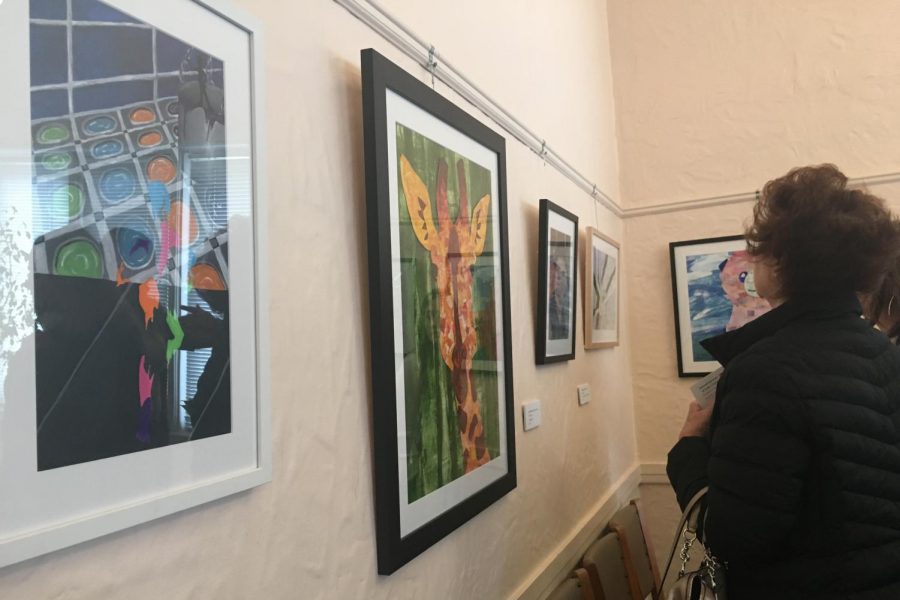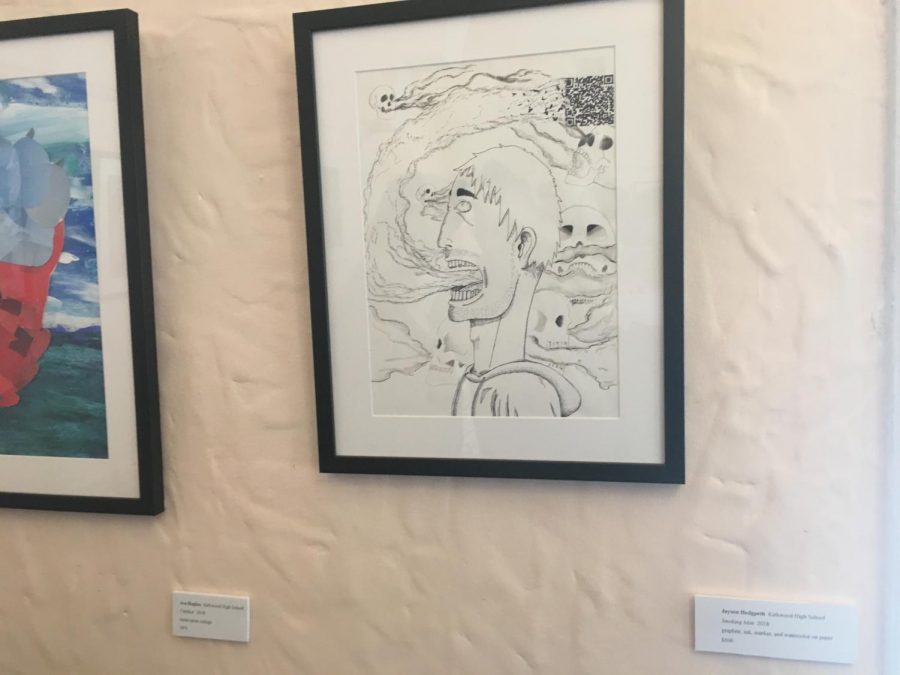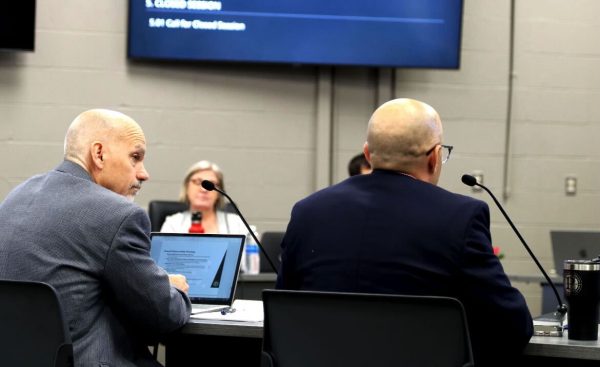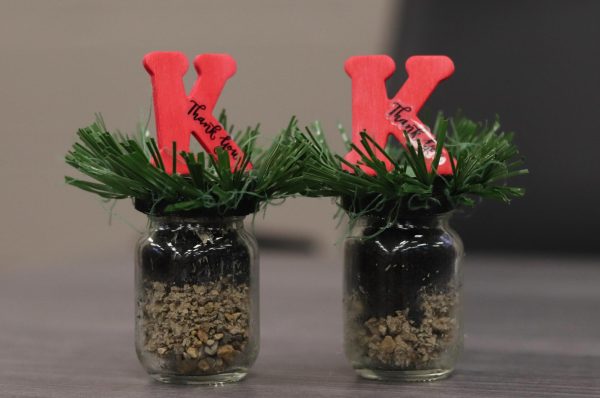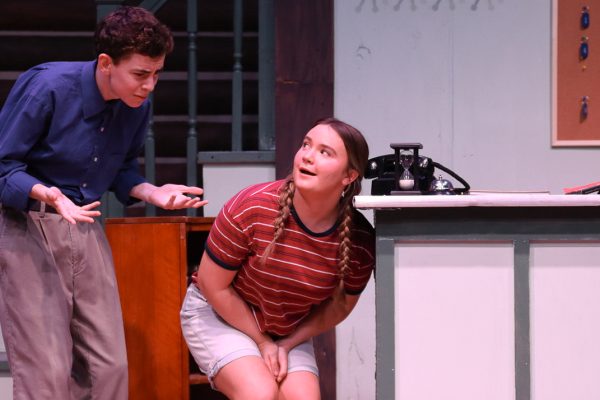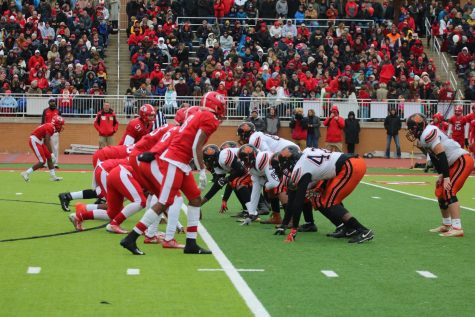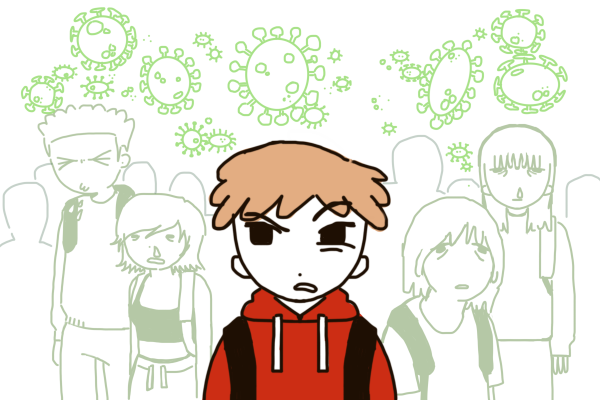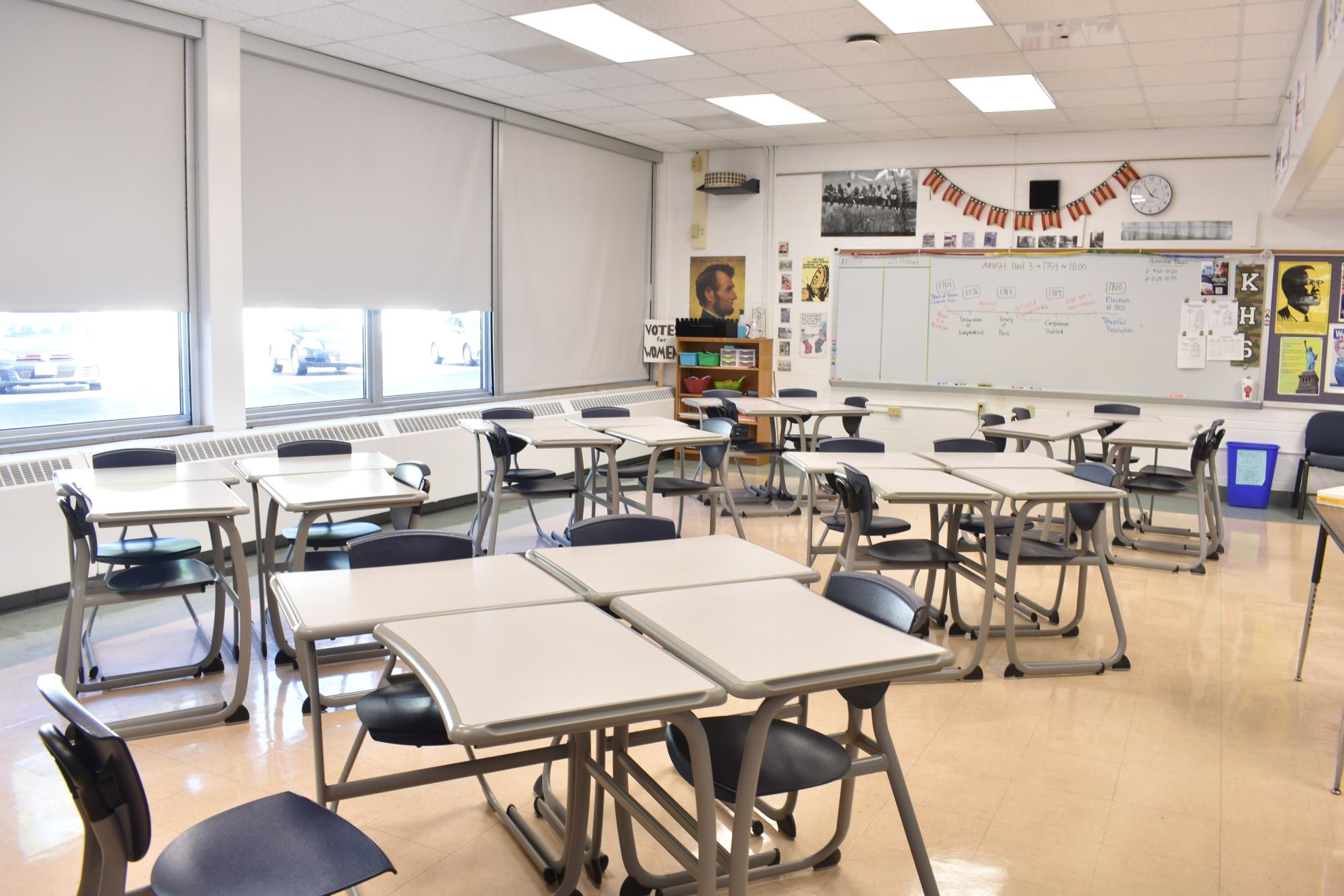AP Studio Art Exhibit
Exhibit featuring work from AP Studio Art students from March 10 to April 1 in The Monday Club gallery located at 37 S. Maple Ave in Webster Groves.
Chugging shots of espresso and sharpening No. 2 pencils on a breezy May morning, students file into rows of desks to take 3-hour AP exams to receive college credit. The AP Studio Art students, however, spend the morning wrapping their masterpieces and preparing to ship them to the College Board.
On Sunday March 10 from 2 p.m. to 4 p.m., a crowd of nearly 100 student artists, family and friends packed into the quaint Monday Club to attend the AP Studio Art Exhibit. The gallery featured one piece selected by each student, framed, on display and in some cases, for sale. The gallery will continue to feature the students’ artwork until April 1. Olivia Squires, senior, chose to display the piece she felt best reflected her unique style.
“This year I’ve mostly been working on portraits,” Squires said. “In this piece I used brighter colors of the rainbow instead of mixing them together to make realistic skin colors. I like to make more weird-looking stuff because it draws more attention.”
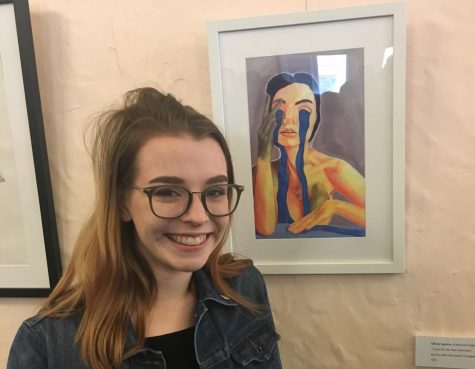
Olivia Squires, senior, and her acrylic and color pencil drawing titled “It be like that sometimes.”
According to Jason Hoeing, AP art teacher, students have the option to register for three different AP Studio Art courses: AP 3-D design, AP 2-D design and AP drawing, which also includes painting. At the end of the year, they submit 12 pieces to the College Board that represent a sustained investigation in a concept or idea. The artist can express their theme in the content or the technique of the work, considering all 12 works serve as cohesive pieces of a central theme. They also submit another 12 unrelated projects, representing a breadth of work that shows variety in medium and expression. Like all other AP exams, the AP art students’ quality of work is evaluated on a scale of one to five.
“I’m so proud of the kids this year,” Hoeing said. “It’s a lot of work. In classes like AP Psychology and AP History, it’s nothing but cold hard facts, and you learn them, but you don’t get emotionally connected to them. But in AP Studio Art, kids get really emotionally connected to their work, and it’s my job to find their strengths and show them how to improve. It’s heartwarming, but also hard sometimes to watch my kids face challenges throughout the year.”
Hoeing said his students have unrestricted freedom to choose their project’s focus, and they often pursue a concept to which they feel deeply connected. AJ Dowell, junior, chose to create a series of works centered around addiction. She said her pieces range from visualizing light-hearted images such as caffeine to more serious concepts such as pills, drugs and juuling.
“My focus is really relevant to high schoolers, and a lot of people don’t realize how common it is and I wanted to communicate the effects of that culture,” Dowell said.
Your donation will support the student journalists of Kirkwood High School. Your contribution will allow us to purchase equipment and cover our annual website hosting costs.
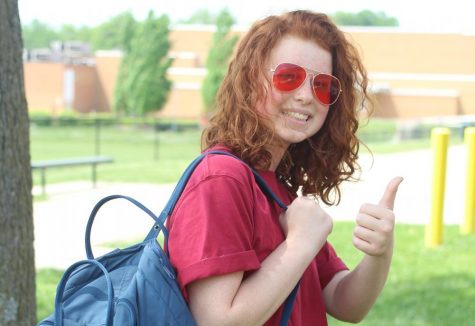
Interests: band ten hut! PRIDE, german club prez, link cru, nhs, the coalition, gapp exchange program <3
Favorite quote: “me: h-
call staffer...


